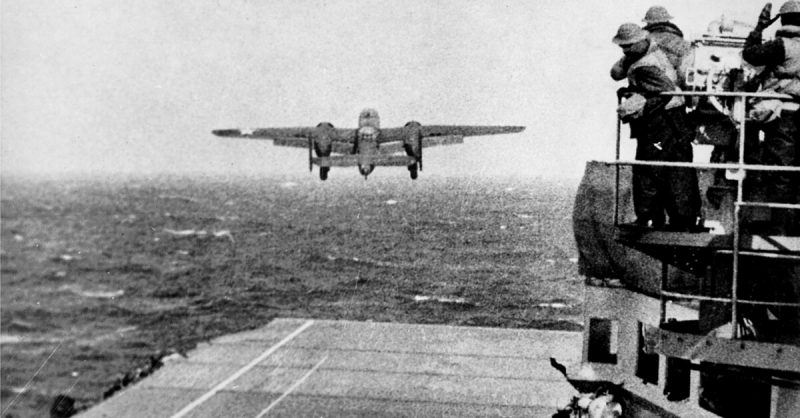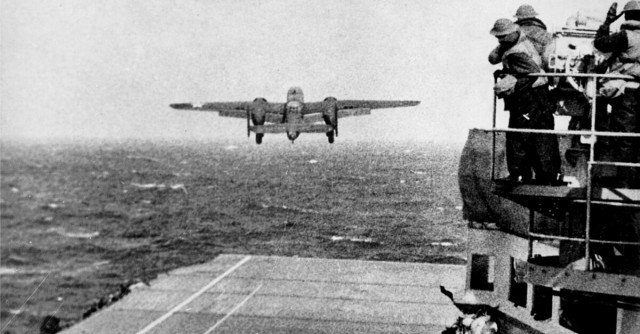During World War II 80 volunteer raiders bombed a Japanese city in revenge for the attack on Pearl Harbor. It was April 18, 1942, and, under the command of Lieutenant Colonel Jimmy Doolittle, the men successfully pulled off that one-way attack.
After the attack, the men flew to China. Some were able to make it airfields, and some had to bail out of the planes because of low fuel. Chinese villagers, guerrillas, and missionaries were there to help the men who had to bail out of the planes.
The 80-men group knew that Japan would retaliate against China due to China’s help for the Americans after the raid. It is said that this retaliation claimed over a quarter million lives.
After the Americans had confirmation that there would be retaliation, they managed to keep the raid a secret from the Pacific allies. The raid would be named the Doolittle Raid, and the full story is becoming clearer. Just recently there were new missionary records found in DePaul University’s archives. These records indicate just how much the Chinese suffered during and after the raid.
After Japan had found out that China was helping the Americans to successfully bomb them, Japan decided to make a strategic plan that focused on all of the important airfields in China. Japan saw the major threat of what the Americans could do if they had the help of the Chinese. Not only could the Americans launch attacks from the sea and China, but they could also use bomber planes to fly directly from China to Japan.
The records found at DePaul suggest that the Japanese especially wanted to punish the people and villages who helped the bombers who had bailed from the planes – the allies of the Americans were to suffer the most. Missionaries who were in the target areas of China during those attacks provided a majority of the notes that Americans have used to authenticate the story.
Some of the missionaries had helped the bombers. The records talk about how the missionaries knew the dangers of helping the Raiders, especially because they were invested in making peace and being neutral in the conflict. One note in particular talks about the Rape of Nancheng and just how many lives were lost during the fight, saying that the river had turned red from all of the blood spilled.
Vandenberg, a priest, working near the village where the Raiders dropped out of their planes, says that he kept receiving letters from surrounding villages that had missionaries. He says he did what any other missionary would do: he fed and cared for the Americans. He and his group of missionaries did not care that they were soldiers, but that they needed food and shelter, and that is what they were given.
Another priest, Father Wendelin Dunker, wrote in his notes about the attack of Ihwang. The Japanese soldiers raped women from any age, looted the town, and burned it down in its entirety. Then they shot every child, woman, and even animal they saw – leaving the dead lie where they had been shot.
The following day the Japanese took over Nancheng, an event that many priest missionaries call the Rape of Nancheng. The Japanese soldiers ended up taking 800 villagers and putting them into a storehouse. Reverend Frederick McGuire wrote in his notes that the soldiers were constantly drunk and dressed in nothing but loin clothes.
They were constantly on the lookout for any girls or children so they could rape them. He said many people mourned the loss of their village and will forever mourn because of the new rule of East Asia the Japanese put on them.
Toward the end of the raid, the Japanese destroyed the city that held 50,000 people. They destroyed all of the radios and looted the hospitals and the drugs in them. They ruined the electrical plants and ripped up the railroads. The destruction lasted three days, leaving the city a burning ruin.
Over the entire summer, the raids spread and continued over 20,000 miles. The groups raided any village they came across, destroying complete herds of animals, irrigation systems, and crops. They also destroyed bridges, roads, and airfields.
When the Japanese found people who had helped the Americans, they tortured them. Several people who were captured were told to eat feces for helping the Americans and then were told to line up so that they could be a part of a contest.
That contest involved the people lining up so the Japanese could see how many of them a single bullet could pass through before stopping. One man, who had helped the pilot Harold Watson by letting him stay with him and his wife, was soaked in kerosene and his wife forced to torch him.
Reverend Charles Meeus wrote in his notes that the gifts to the villagers from the Americans would leave evidence of their involvement, thus resulting in the destruction of their villages.
There were 28 market towns in the entire region of the Japanese raids and only three of those towns survived the devastation. One of those towns was Yushan, which held 70,000 people. All of those people, in fact, participated in a parade that was held for the Americans. There were 2,000 killed and 80% of the homes were destroyed.
After everything had calmed down, the Chinese government blamed the United States for the Japanese destruction. The Doolittle raid was only supposed to make Americans feel better after the bombing of Pearl Harbor, but there was no doubt that Japan’s retaliation against China was a direct consequence.
But then, it was not the Americans who devastated China, it was the Japanese – Japan should be the country to blame.

